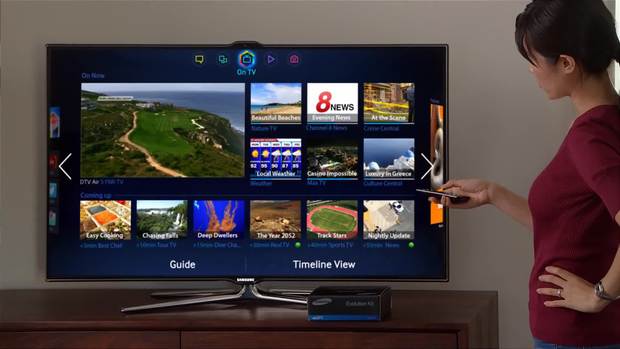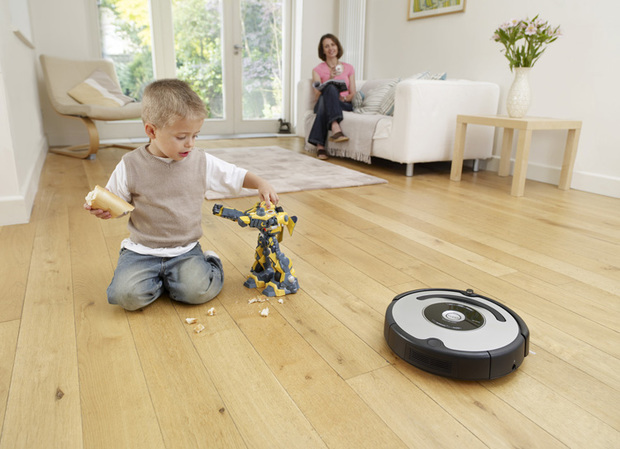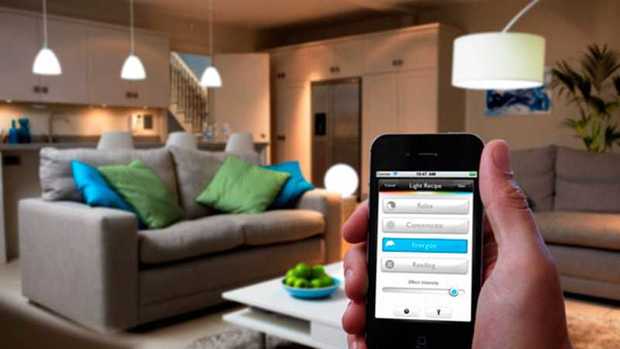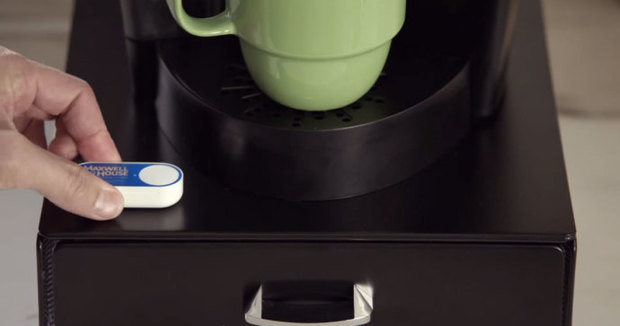The world of gadgets in the mecca of information technology. Part 7: “smart home” and automation family life
columnist “real time”, Alexander Galkin, who lives in Silicon (Silicon) valley and works of Microsoft, continues to acquaint readers with the device, simplifying our lives, creating around us warmth and comfort. If any new items have already been able to penetrate the Russian market, with some of them we know only at the futuristic films. However, the future is much closer than we think, and some “smart” things that are available “mortal” Galkin told in his new column.
In the previous parts I told about the technologies that are gradually changing our way of life, I mentioned such a thing as « intelligent house ». This concept appeared a long time ago, and Microsoft founder Bill Gates was one of the first people who could afford to build a house, fully packed with electronics, became the first “smart house» (smart house) on the planet.
Today, technology stepped so far that almost everyone can feel like Bill Gates and equip your home monitoring and remote control systems. In addition, familiar to us household items also evolved. For example, disk phone has evolved into a basic telephone system with multiple cordless handsets, memory for 100-200 rooms, call history, and voicemail. In parallel, there were mobile phones, having risen from simulating tubes ordinary phones to advanced smartphones, representing a hybrid phone, the TV and the camera.
However, today we are not talking about them.
Smart TV
The most common subjects related to many of the house, is the TV, which is gradually expanding its features and modern TVs have almost no different from the computer and monitor (and the vast majority of them can act as an external monitor for a computer). The firm Samsung quickly registered to their televisions SmartTV mark ( “smart TV”), which gradually becomes more and more nominal, as in his time happened to Xerox -. Photocopying company Xerox machines became the name of any copier
Many of today model phones are able to play videos in different formats and with different media (external hard drive, flash drives), are able to correctly display a video with stereo pair using glasses with Shatter, can play music and display photos. In addition, most of them allows you to redirect a video stream on their mobile devices, as well as special media server that can publish various media content on the local network

However, the boundary between the really “smart” TV and a very heaped up, but still not SmartTV, is the possibility of expanding the TV functionality by installing additional applications. So, on the Samsung TV can be installed applications online video libraries to find, pay and view content, applications, video conferencing (Skype), various news apps, and of course, games. That application, or rather the functions that they are added to the TV, turn a normal TV to the TV of the future
Today TV -. Thing still is not cheap and is usually purchased for at least 5-8 years. What to do if you’ve already bought a TV, and then found out that he was not “smart” and the application does not support? There is a variety of options:
- Play last generation consoles such as the Xbox or PlayStation 4, support the installation of the application (and, of course, games), for example, a Skype or Netflix. In addition, they can play a variety of video formats with BlueRay-drive or media server.
- There are special set-top box the size of a USB flash drive that is inserted directly into the HDMI-connector TV set and make it possible to operate with remote applications look online video, projected on the screen mobile devices, or to redirect streaming video. One of the most popular consoles is Roku, are inserted immediately and HDMI, and USB (last – to get its power
- The traditional set-top boxes that connect to the Internet. allow you to show the purchased or free content. Usually, when purchasing TV programming package you get a console, already configured to access the purchased links. We should also mention the special set-top box from Apple (Apple TV) and Amazon (Amazon Fire TV), which are focused on video and audio, sold these platforms (with Home Automation support for Apple TV, see. below).
«smart» vacuum cleaners
If you are smart TVs were the result of a gradual and, in principle, the expected development of the functions of conventional TVs, it has been a real breakthrough in the use of special autonomous robot vacuum cleaner, Roomba debuted under the brand name of the company iRobot.
the robot cleaner in appearance is a disc diameter of about 25-30 see, on the underside of which there are brushes and nozzles for spraying cleaning fluid and the collection.
Once the robot begins to conduct reconnaissance of the apartment and cleaned the floor within reach of premises. The robot is able to return to the base station for the pre-charge if he ends up battery, and continue working from the point where he was forced to break off. More expensive models are able to automatically detect the type of surface (tile, carpet, hard surface) and apply a variety of programs depending on this, they are also able to self-clean and pull out the tangled thread and other debris.

Included with the robot cleaner is more virtual walls, allowing to limit the freedom of movement, for example, that the robot is not stopped by the nursery where the floor scattered too many toys.
the main advantage of using this robot is that it can be programmed to carry out wet cleaning for 1-1.5 hours before you came to work, and came home from work, will be pleased to see a completely clean house.
home automation (home automation)
Speaking of “smart” homes, we first of all mean the installation, configuration, and monitoring of home automation devices. Home automation – this is where you can program to after leaving the house after you turned off the light itself, and half an hour before arrival to warmed dinner plate. It’s like a fairy tale? In fact, there is nothing impossible. Let’s see what is a such a system
In the most general form of home automation consists of the following large blocks:.
- Sensors (sensors): any device capable of measuring a parameter in the room or on the street. These include all kinds of motion sensors, temperature, opening and closing doors, carbon dioxide and carbon monoxide gases, lighting and the like
- Actuators, or executing devices (actuators):. Rents space camera activated or deactivated light, controlled by timer or remote stove, opened the garage door
- The central module, which is analyzing data from sensors and contains the “rules” in the form. “if in the room within 5 minutes of no movement, then turn off the light “or” if the house movement, turn on the lights and turn on the camera, “” if the temperature in the bedroom fell below 14 degrees, then turn on the heating. »
as a central unit, you can use Amazon Echo or Apple TV, you can buy a special system that focuses on “smart” home, as you can simply collect a station from the designer for radio-based portable SBC Raspberry computer Pi: it all depends on what you already have on your budget and knowledge in the field of electronics and programming

Many of the actuators can communicate with the central station via a special protocol and virtually no setup. Furthermore, most of these devices represent a simple “smart outlet”, which is capable of remote or timer turn on or off the power supply, thereby controlling inserted therein appliance.
Recently Silicon steel Valley very popular thermostats Nest made by the company, founded by former Google employees. These thermostats are not only well integrated with the system of smart homes, but also have their own “intelligence” and the ability to manage them through the app on your phone that allows you to both change the scheduled temperature and keep a certain temperature in the room.
Recently, and a company like Amazon has decided to enter this market. In one of the previous issues I have talked about smart column Microsoft Echo, in which intelligence Alexa built. This column can also be integrated via Bluetooth-connection with a large number of “smart” devices and operate it, serving the central module.
Also on March 31 last year, the company announced a “momentary button» (Amazon dash buttons): small buttons that looks like a bell housing that can be installed in rooms, closets, etc., and are connected via WiFi to the Internet. During the initial setup, you can select items from the Amazon online store, which will be ordered by pressing this button. The button is also provided with a photodiode, the color of which indicates the status of the order (up to a certain point, you can cancel the order even without problems). So Amazon is trying to facilitate ordering goods online.

This concludes the series of articles about the technical innovations of Silicon Valley. In future articles we’ll have a completely other topics. Express your opinions in the comments and send me e-mails with comments and suggestions.
Alexander Galkin
Help
Galkin Alexander – a design engineer in the company of Microsoft; administrator and bureaucrat “Wikipedia” in Esperanto; polyglot.
- Born February 26, 1979 in Kazan.
- In 1996 he graduated with a gold medal in Kazan school №102.
- In 2002, honors graduated from the pediatric faculty of Kazan state medical University.
- From 2002 to 2005 he worked in the neurobiology Institute in Berlin.
- in 2012 he graduated from the Technical University of Hamburg.
- Since 2013, working as an engineer at Microsoft (Software Development engineer) in the division search engine Bing. The office is located in Sunnyvale, Calif.
- She is fluent in Russian, Tatar, English, German, French and Esperanto. Also speaks Italian and Spanish.
- The author of articles on various topics on habrahabr.ru, geektimes.ru, pikabu.ru.
columnist “real time”.
No comments:
Post a Comment